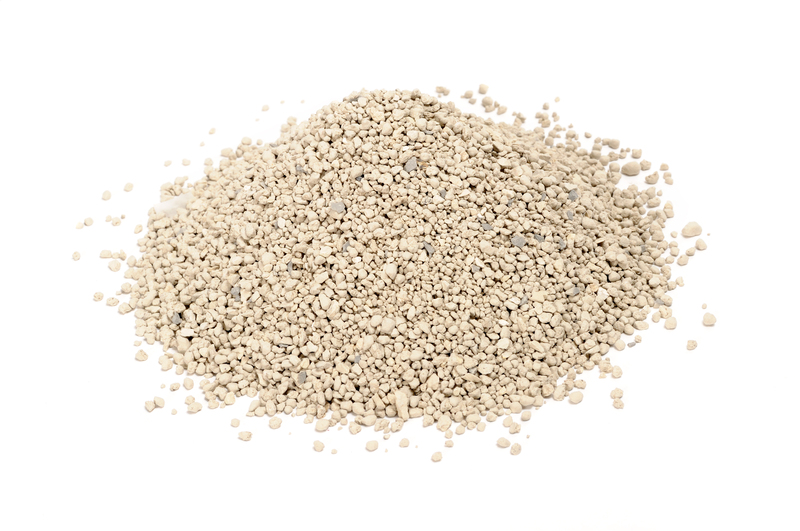Discover the Right Way to Keep Your Curtains Looking New
Posted on 01/10/2025
Discover the Right Way to Keep Your Curtains Looking New
Are your curtains beginning to lose their once-vibrant appeal? If so, you're not alone. Window treatments often go neglected in daily cleaning routines, yet they can harbor dust, odors, and stains just like any other fabric in your home. Keeping your curtains looking new not only enhances your decor but also extends the fabric's longevity and maintains a healthier indoor environment. In this comprehensive guide, we'll unveil the best methods for curtain maintenance, cleaning, and care, helping you preserve their fresh and elegant appearance year after year.
Why Is Curtain Maintenance Essential?
Curtains aren't just decorative; they play a crucial role in managing light, providing privacy, and even improving energy efficiency in your home. Because they're exposed to daylight, dust, heat, and humidity, curtains are prone to fading, discoloration, and grime build-up. Regular maintenance and the right cleaning approach are vital for ensuring your curtains look as good as new for as long as possible.

How Often Should You Clean Your Curtains?
The frequency of cleaning depends on:
- Type of fabric (delicate fabrics require less frequent cleaning)
- Location (kitchens or rooms with heavy traffic may need more frequent attention)
- Exposure to sunlight and outdoor pollution
- Presence of pets and allergy sensitivities
As a general rule:
- Light dusting: Weekly
- Deep cleaning: Every 3-6 months
- Spot cleaning: As needed for spills/stains
The Best Ways to Keep Curtains Looking Fresh
1. Regular Dusting and Vacuuming
Dust particles accumulate quickly on curtain fabrics, dulling their appearance and aggravating allergies. Keeping curtains new-looking starts with weekly dusting:
- Use a vacuum cleaner with a soft brush attachment to gently remove dust from top to bottom. Use low suction for delicate fabrics.
- Handheld dusters or lint rollers are great for removing pet hair and surface particles quickly.
- For blinds under curtains, dust both surfaces for a thorough clean.
2. Proper Washing Techniques
Wondering how to wash your curtains without damaging the fabric? Here's what you should know:
- Check the care label first. Many modern curtains are machine-washable, but always follow manufacturer instructions.
- For machine-washable curtains, use mild detergent and a gentle cycle with cold water to prevent shrinkage or color fading.
- Hand-wash delicate textiles in a sink or bathtub using gentle circular motions and rinse thoroughly.
- Never overload the washing machine. Wash sheer or lightweight curtains separately to avoid snagging.
- For heavy or lined curtains, consider professional dry cleaning, especially if the label suggests it.
3. Ironing and Steaming for a Wrinkle-Free Look
Wrinkled curtains can look untidy, even if they're clean. Achieve a crisp, like-new appearance with these ironing and steaming tips:
- Iron while slightly damp using the recommended setting for your fabric. Always iron on the reverse side.
- Steamers are perfect for removing wrinkles on hanging curtains quickly - simply run the steamer from the top down.
- Hang the curtains promptly after drying or washing to minimize wrinkles.
4. Immediate Stain Removal
Spills and stains can set quickly and cause permanent damage if not addressed:
- Blot stains with a clean, dry cloth; never rub, as it can spread the stain and embed particles deeper into the fibers.
- Use a mild solution of water and gentle soap for water-based stains. Dab, rinse, and then pat dry.
- For oil-based stains, try a sprinkle of baking soda to absorb the grease before cleaning.
- Test any stain remover on an inconspicuous area first to ensure it doesn't cause discoloration.
Special Care for Different Curtain Fabrics
Lined and Thermal Curtains
These provide insulation but typically require gentle cleaning methods:
- Spot clean as required and use professional dry cleaning for deep cleaning.
- Do not soak or tumble-dry; excessive moisture can damage the lining.
Sheer and Lace Curtains
Sheer materials look best when kept immaculately white and crisp:
- Clean regularly to prevent yellowing or discoloration.
- Hand-wash in cool water with a little gentle detergent.
- For whitening, add a small drop of vinegar to the rinse cycle.
- Let air-dry flat to prevent stretching or misshaping.
Velvet and Heavy Curtains
These luxurious drapes demand careful maintenance:
- Vacuum regularly to remove dust and prevent matting.
- Steam with care to revive the pile.
- Spot clean stains, but avoid saturating the fabric.
- For thorough cleaning, rely on specialist curtain cleaners.
Preventative Measures to Keep Curtains Looking New
1. Use Sun Protection
UV rays are notorious for fading curtain fabrics. To prolong curtain lifespan and maintain vibrant color:
- Install sheer liners behind your curtains to absorb direct sunlight.
- Consider UV-blocking window film.
- Regularly rotate or flip curtains (if possible) to distribute sun exposure evenly.
2. Avoid Overexposure to Moisture
Dampness can lead to mold and mildew. Here's how to keep your curtains looking fresh:
- Ensure good air circulation; open windows or use dehumidifiers in humid rooms.
- Hang curtains so they don't touch condensation-prone windowsills or floors.
- Choose quick-drying fabrics for kitchens and bathrooms.
3. Prevent Pet Damage
Pets can leave fur, odors, and even scratches on curtain fabrics:
- Train pets not to jump or claw curtains.
- Use lint rollers regularly to remove hair.
- Place furniture so pets are less likely to reach the curtains.
4. Minimize Odors
Fabrics take on household scents, especially in kitchens or homes with smokers. To keep curtains smelling as new as they look:
- Airing out curtains on a clothesline in fresh air helps dissipate odors.
- Use fabric sprays suitable for the curtain material.
- Add a cup of baking soda or white vinegar to the wash for extra odor-fighting power.
Professional Curtain Cleaning Services
While regular DIY care is effective, sometimes your curtains will benefit from a professional's touch. Here's when to opt for a specialist:
- Highly valuable, antique, or delicate fabrics that risk shrinkage or damage from home washing.
- Stubborn stains or odors you can't remove yourself.
- Deep cleaning for allergy relief or end-of-lease requirements.

Frequently Asked Questions: Keep Curtains Looking Like New
Can I machine-wash all types of curtains?
No, always check care labels. Delicate, lined, or heavily embellished curtains should be hand-washed or dry cleaned, while many cotton or polyester curtains are machine washable.
What's the best way to remove stubborn wrinkles?
A handheld garment steamer is ideal for most curtains. For heavy wrinkles, iron on the recommended setting while the curtains are slightly damp and hang immediately.
How should I store curtains when not in use?
Dry curtains thoroughly, fold neatly, and store in a cool, dry place away from sunlight and pests. Wrap in clean cotton sheets to allow the fabric to breathe and keep curtains fresh during storage.
Can I freshen up curtains between washes?
Yes! Regular vacuuming, light misting with a fabric freshener, and airing out in the sun all help maintain that new-curtain feel between washes.
Final Thoughts: The Secret to Curtains That Always Look New
With the right care regimen, your curtains will continue to look new, fresh, and fabulous for years to come. Pay attention to fabric requirements, clean them regularly, address stains promptly, and take preventative measures against sun, moisture, and odors.
Your curtains are an investment in your home's style and comfort. By applying these expert tips, you can discover the right way to keep your curtains looking new--ensuring they remain a highlight of your decor and a source of pride in every room.
- Make cleaning part of your regular routine.
- Choose maintenance products wisely based on fabric type.
- Don't hesitate to seek professional help for troublesome stains or expensive drapes.
Ready to enjoy fresher, brighter curtains? Start today and see the dramatic difference a little proactive care can make.



